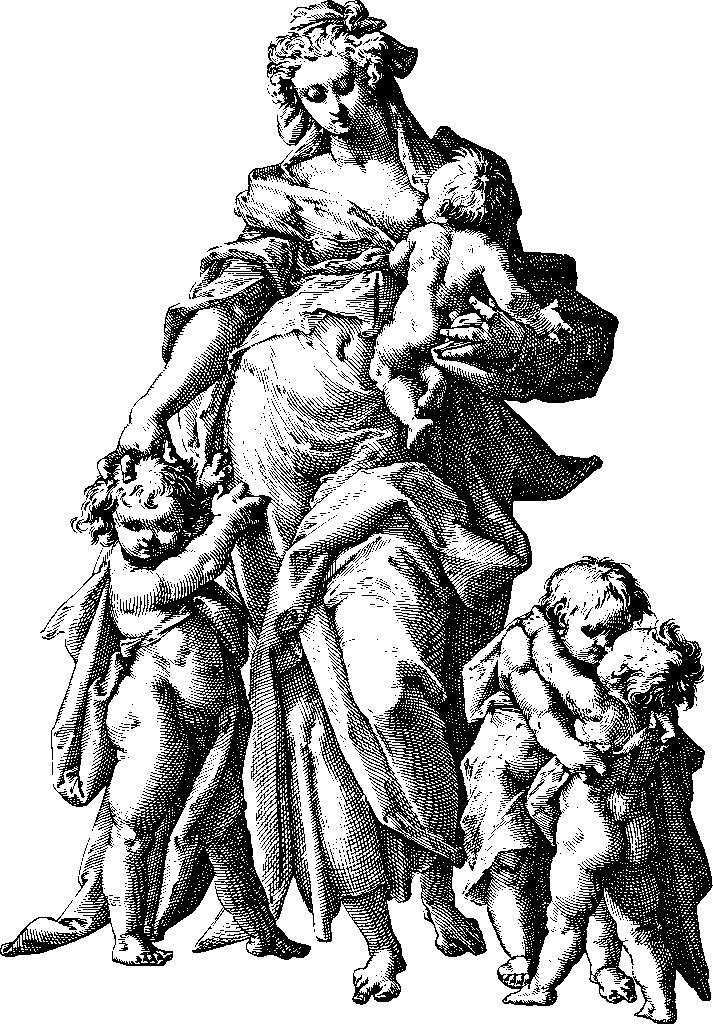
The advertising world recently paused to mourn the passing of Steve Hayden, a creative force whose ingenuity reshaped modern marketing. Hayden, an award-winning writer and executive, died on August 27 in Patchogue, N.Y., at the age of 78. His career was marked by a profound ability to blend strategic thinking with compelling storytelling, leaving an indelible mark on some of the most recognizable brands of his era.
Hayden’s legacy is most famously tied to his pivotal role in crafting Apple’s ‘1984’ commercial for the Macintosh computer. This 60-second spot, aired just once during the Super Bowl on January 22, 1984, transcended traditional advertising to become a cultural touchstone. It introduced a revolutionary product without showing it and set a new standard for Super Bowl advertising, transforming it into an arena for cinematic and highbrow commercial art.
Beyond this singular triumph, Hayden played important roles in numerous campaigns for technology giants like IBM and Motorola, and consumer brands such as American Express and Dove. His work consistently demonstrated a unique talent for distilling complex ideas into simple, marketable concepts. This skill earned him the respect of peers and propelled him into the Creative Hall of Fame of the One Club for Creativity in 2013.
1. **The Pivotal “1984” Commercial: Genesis and Vision**Steve Hayden’s most celebrated achievement remains his central role in creating Apple’s iconic ‘1984’ commercial for the Macintosh. This groundbreaking advertisement, conceived from Steve Jobs’s directive to “stop the world in its tracks,” aimed to introduce a revolutionary personal computer without explicitly showing the product. Hayden, then a copywriter for Chiat/Day, was crucial in developing the ad’s powerful narrative.
The commercial drew thematic inspiration from George Orwell’s 1949 novel, “Nineteen Eighty-Four,” depicting a totalitarian future under Big Brother. This allegorical framework allowed the creative team—Hayden, Lee Clow, and Ridley Scott—to position the Macintosh as a symbol of freedom. It was widely seen as an implicit attack on Apple’s dominant rival, IBM, representing conformity.
Hayden reflected on the ad’s core message in a 2024 oral history interview, asking, “Given the sunny good nature of the average person, wouldn’t this be a great tool to rebel against government overreach, especially in parts of the world where news is suppressed, manipulated or so tightly controlled it was useless to people?” This underscored the Macintosh’s role as a tool for intellectual liberation.
The advertisement featured a female runner in a Macintosh tank top, pursued by riot police, who hurls a sledgehammer at a giant screen. On the screen, a menacing Big Brother figure delivered a fanatical rant, written by Hayden with totalitarian quotations. The screen’s destruction symbolized the breaking of oppressive thought, culminating in the voice-over: “On January 24th, Apple Computer will introduce Macintosh. And you’ll see why 1984 won’t be like ‘1984.’ ”

2. **Collaboration and Creative Forces: Jobs, Clow, Scott**The “1984” commercial was a product of exceptional collaboration, uniting key figures whose collective genius brought the vision to life. Steve Hayden’s copywriting intertwined with insights from Apple co-founder Steve Jobs, creative direction from Lee Clow, and cinematic artistry from Ridley Scott. This synergy produced an advertisement of unprecedented impact.
Steve Jobs initiated the project with an ambitious goal: to “stop the world in its tracks.” His unwavering ambition was infectious, fostering a sense of participating in something monumental. Lee Clow, Chiat/Day’s creative director, admired Hayden’s “cerebral imagination” and recognized him as an “incredible talent,” whose words for “1984” seemed drawn directly from Orwell’s novel.
Ridley Scott, with his renowned directorial expertise, translated the script into a visually stunning and dramatically charged short film. His direction imbued the commercial with epic scope and powerful tension, crucial to its memorability. The convergence of Hayden’s narrative, Clow’s leadership, and Scott’s visual mastery forged an advertising piece that stood as both an artistic triumph and a marketing milestone.
3. **Orwellian Allegory: Subversive Messaging and IBM Rivalry**The “1984” commercial transcended product launch, serving as a potent Orwellian allegory embedded with a subversive message. Drawing heavily from George Orwell’s dystopian novel, it offered both a critique of conformity and a rallying cry for intellectual freedom, elevating advertising’s conceptual depth.
Steve Hayden deliberately crafted the menacing Big Brother figure’s fanatical speech using direct quotations from historical dictators. This choice intensified the commercial’s thematic resonance, highlighting the perils of suppressed thought and unchecked authority. The ad was widely understood as an implicit challenge to IBM, Apple’s dominant competitor, metaphorically casting it as the Big Brother of conformity. The Macintosh was, conversely, positioned as the instrument of liberation.
The heroic female runner, characterized by Hayden as “the savior who says, ‘The world could be different than this,’ ” embodied defiance. Her act of demolishing the screen symbolized a break from oppressive systems and the dawn of a new era. This rich, subversive messaging resonated deeply with a public yearning for innovation, positioning Apple as a champion of individual empowerment.
4. **The Unforgettable Airing and Its Immediate Impact**The airing of the “1984” commercial during Super Bowl XVIII was a masterstroke, transforming a single broadcast into a moment of shared cultural significance. Its solitary appearance during one of television’s most-watched events created an immediate, widespread impact that reshaped public and industry expectations for televised advertisements.
The 60-second spot’s exclusive Super Bowl placement ensured maximum attention, sparking extensive discussion and analysis. This singular broadcast amplified its mystique and cultural weight, demonstrating advertising’s power to captivate a national audience. Its dramatic imagery and novel approach of introducing a computer without displaying the product generated considerable intrigue and anticipation.
Robert Thompson, director of the Bleier Center for Television and Popular Culture at Syracuse University, underscored the commercial’s transformative influence on Super Bowl advertising. He noted, “‘1984’ said that Super Bowl ads were going to be little movies with a highbrow edge on some occasions.” Thompson further observed its artistic depth, stating, “it was so artsy — the thing had elements of literature and Fritz Lang’s ‘Metropolis,’ ” highlighting its pioneering role in blending high art with commercial messaging.
Read more about: Unearthing the Gems: 14 Must-Watch Underrated Clint Eastwood Movies for Every Fan and Cinephile

5. **Awards and Enduring Recognition of “1984”**Apple’s “1984” commercial swiftly garnered widespread acclaim, earning prestigious awards that cemented its status as an iconic and influential piece of advertising. These accolades not only recognized its creative brilliance but also foreshadowed its lasting legacy within the industry and broader popular culture.
The commercial was honored with a Clio Award for excellence in advertising, a highly respected industry recognition validating its innovative concept and exceptional execution. Further international recognition came from the Grand Prix at the International Advertising Film Festival in Cannes, France, now known as the Cannes Lions. Winning this coveted award underscored its universal appeal and significant global influence.
Its enduring significance was emphatically recognized in 1995 when Advertising Age named “1984” the greatest television commercial of all time. This declaration affirmed its timeless impact, acknowledging its immediate success and its profound cultural and artistic footprint. The commercial, greatly shaped by Steve Hayden’s copywriting, transcended its commercial purpose to become a symbol of innovation and rebellion. Beyond its critical success, it “helped sell many more Macintoshes than Apple had expected,” illustrating that its artistic merit translated into substantial business impact.
Product on Amazon: Loud Explosive And Unforgettable Impact T-Shirt
Brand: Energetic Expressions Vibrant Cartoon Impact
Binding: Apparel Product Group: Apparel
Price: 17.99 USD
Features:
1. Unleash your energetic side with a design that’s both bold and vibrant. Perfect for those who love making a memorable impact with their style. Whether you’re hanging out with friends or standing out at events, this is your go-to choice.
2. Capture attention with a fun, cartoon-inspired look that speaks volumes. You’ll love how it resonates with your lively personality, making every moment unforgettable. Express yourself boldly and confidently.
3. Lightweight, Classic fit, Double-needle sleeve and bottom hem
Shopping on Amazon >>
6. **The “Lemmings” Sequel: A Lesson in Karmic Balance**Following the groundbreaking success of “1984,” Steve Hayden and his team, collaborating with director Tony Scott, attempted to replicate its impact with a sequel titled “Lemmings.” Intended to introduce the Macintosh Office product line during the subsequent Super Bowl, this advertisement unfortunately served as a notable counterpoint to its predecessor’s triumph.
Unlike the inspirational tone of “1984,” “Lemmings” was critically panned. The spot depicted blindfolded executives, whistling “Heigh Ho,” marching off a cliff. This imagery critiqued corporate conformity and an unwillingness to challenge established practices, a veiled criticism again directed at IBM.
The commercial’s somber message failed to resonate as “1984” had. Hayden himself humorously reflected in a 2012 Forbes interview, stating, “I often remind people about ‘Lemmings’ as proof of karmic balance.” He noted, “What was missing from ‘Lemmings’ was the girl in ‘1984,’ the savior who says, ‘The world could be different than this.’ ” This highlighted the absence of an empowering protagonist.
The contrasting receptions offered a crucial lesson in effective advertising: the balance between social critique and inspiring vision. “1984” offered empowerment, while “Lemmings” presented a stark, unmitigated vision of corporate stagnation. This demonstrated that even Hayden could face challenges in replicating a singular, culturally resonant success.

7. **Early Life, Education, and Entry into Advertising**Before becoming a pivotal figure in modern advertising, Steve Hayden’s journey began in St. Charles, Mo., born Stephen Edward Hayden on May 21, 1947. His family later moved to San Jose, Calif., laying an early foundation for a life that would eventually intersect with the burgeoning technological landscape.
Hayden grew up in an intellectually and culturally rich home. His father, Ralph, was an internist; his mother, Gertrude, an accomplished opera singer and church organist. This environment nurtured Hayden’s early artistic talents, leading him to learn the cello and pursue musical studies at the Interlochen Arts Academy in Michigan, an institution he would later serve.
His academic path culminated in a bachelor’s degree in English from the University of Southern California in 1968. A high school history teacher’s remark profoundly influenced his career: “‘With work you could be impressive or you could just end up a clever phrasemaker.’ ” This sparked Hayden’s realization: “People will pay you for clever phrasemaking?” Inspired by Volkswagen’s “Think Small” and a pragmatic view of his musical abilities, he pivoted towards advertising, starting as a junior copywriter at McManus, John & Adams in Detroit, working on the General Motors account. This began his distinguished career.
8. **Return to Apple: Leadership at BBDO West**Following his initial groundbreaking work at Chiat/Day, Steve Hayden transitioned to BBDO/San Francisco, a move that occurred shortly before Steve Jobs’s resignation from Apple. This marked a significant chapter where his leadership acumen grew as prominent as his creative genius. He rapidly ascended through the ranks, eventually becoming chief creative officer of BBDO/Los Angeles in 1987.
In a crucial turn of events, Hayden was reunited with the Apple account, which had previously moved from Chiat/Day. His tenure at BBDO was characterized by a deep understanding of technology and an ability to translate complex product innovations into compelling advertising narratives. This period showcased his capacity to not only create but also to retain and expand major client relationships for more than a decade.
By 1989, Hayden’s leadership skills led to his appointment as chairman and chief executive of BBDO West. Over the next five years, he was instrumental in securing major accounts, including successful bids for brands like Pizza Hut. This phase of his career solidified his reputation as a formidable leader driving both creative excellence and business growth.
A notable project under his oversight was Apple’s 1990 “Industrial Revelation” advertisement. This campaign introduced an affordably priced Macintosh, intercutting scenes of a college professor lecturing on industrial and social change with visuals of Macintoshes being manufactured. The ad subtly conveyed technology as an engine of progress, reflecting Hayden’s enduring knack for infusing advertising with deeper societal meaning.
9. **Pioneering the E-Business Era at Ogilvy**In 1994, a pivotal moment in Steve Hayden’s career arrived when he was recruited by Ogilvy & Mather. This presented an ironic twist, as he was placed in charge of the IBM account, Apple’s erstwhile “Big Brother” rival. Initially serving as president of brand services, Hayden was tasked with overseeing the consolidation of IBM’s global business, a monumental undertaking that constituted the largest account shift in advertising history at the time.
His strategic vision proved critical in guiding IBM through a period of significant transformation. Though not heavily involved in the creative side initially, his profound understanding of brand strategy laid the groundwork for future successes. He later moved back into a full-time creative role in 2001, being named vice chairman and creative officer, a position from which he would profoundly influence Ogilvy’s creative output for nearly two decades.
Under Hayden’s astute leadership, Ogilvy embarked on a series of campaigns in the late 1990s designed to humanize IBM, making it a more relatable company. These efforts culminated in the launch of the seminal “e-business” campaign, a defining effort that reshaped both the IBM brand and the broader technology category. The commercials skillfully transformed complex workplace problems into easily understandable narratives, showcasing IBM’s pivotal role in the burgeoning digital economy. Hayden reflected on this challenging yet rewarding period, noting, “There was a special spirit in the beginning. It was an impossible challenge, and we were able to take it on and do some remarkable things.”
10. **Revitalizing Brands: Motorola, American Express, and Beyond**Steve Hayden’s tenure at Ogilvy & Mather extended far beyond the transformative work for IBM, encompassing a diverse portfolio of major brands that benefited from his creative insight and strategic prowess. He played a pivotal role in rejuvenating Motorola’s image and cellphone sales in the early 2000s through the creation of the quirky and highly popular “Hello Moto” campaign. This campaign demonstrated his ability to infuse a brand with a distinct personality, making it memorable and appealing to a mass audience.
His influence also touched other prominent companies, including American Express, where his teams developed compelling advertising narratives that reinforced the brand’s premium positioning and service excellence. Hayden’s broad impact at Ogilvy involved guiding award-winning work for a range of clients, including Kodak, Cisco, AT&T Wireless, and Lenovo, showcasing his versatility across various industries.
Shelly Lazarus, the former chief executive of Ogilvy & Mather, eloquently captured Hayden’s unique talent for simplification. She recounted an instance during a 14-hour briefing with Motorola, feeling overwhelmed. Hayden calmly stated, “It’s not really complicated. It’s intelligence everywhere.” This ability to reduce extensive information to a concise, powerful concept was a hallmark of his creative process, enabling brands to articulate their value with unparalleled clarity.

11. **The “Real Beauty” Campaign for Dove: A Cultural Shift**Among Steve Hayden’s most enduring contributions at Ogilvy was his oversight of the groundbreaking “Real Women” campaign for Dove, a pioneering effort that championed a more inclusive and authentic representation of beauty. This campaign, which later evolved into the globally recognized “Real Beauty” initiative, diverged sharply from traditional advertising by featuring women with a variety of body types, challenging conventional beauty standards prevalent in media.
The “Real Beauty” campaign was more than an advertisement for soap or lotion; it became a cultural phenomenon, sparking global conversations about self-esteem and body image. It was a testament to Hayden’s belief in the power of advertising to do more than sell products—it could also reflect and influence societal values in a meaningful way.
This initiative showcased Hayden’s forward-thinking approach, recognizing that consumers yearned for authenticity and a more relatable connection with brands. By presenting diverse body types and celebrating natural beauty, Dove, under Hayden’s guidance, not only revitalized its brand but also fostered a powerful sense of empowerment among its audience. This philosophy proved that thoughtful storytelling and developing a strong brand personality could leave an indelible mark on consumers for decades.

12. **A Philosophy of Simplicity and Impact**Throughout his illustrious career, Steve Hayden adhered to a consistent creative philosophy centered on the elegant distillation of complexity into simple, impactful concepts. He was, at heart, a copywriter who profoundly believed in the power of words “to move, to persuade and to connect.” This conviction underpinned his approach to every campaign, from the dramatic allegory of “1984” to the direct appeal of “Hello Moto.”
Hayden famously advised aspiring writers, stating, “If you want to be a great copywriter, please your reader.” This directive revealed a deep understanding of human psychology and the art of communication: effective advertising isn’t about grand pronouncements, but about forging a genuine connection with the audience. His ability to make complex topics accessible and engaging was a defining trait.
His talent for taking intricate ideas and simplifying them was consistently praised by colleagues. Shelly Lazarus’s anecdote about the Motorola briefing, where Hayden reduced 14 hours of complex information to “It’s intelligence everywhere,” perfectly illustrates this core tenet of his philosophy. He possessed a unique gift for identifying the essence of a product or brand and articulating it with precision and clarity. Hayden himself wryly referred to advertising as “the pseudo-science and bastard art,” balancing strategic rigor with creative freedom.
Read more about: 11 Compelling Reasons Why Classic Cars Unquestionably Outperform Modern Vehicles: An Expert’s Deep Dive into Timeless Automotive Superiority

13. **Mentorship and Lasting Influence**Beyond the iconic campaigns and strategic triumphs, Steve Hayden’s legacy is profoundly etched in the countless creatives he mentored and inspired throughout his career. He was remembered by many as an “industry giant,” a “dearest mentor,” and a “biggest role model.” His generosity with his intelligence and his time was a rare and cherished trait, fostering an environment where others could thrive.
Shelly Lazarus, his partner at Ogilvy, spoke movingly of their collaboration: “Without him I would never have been able to do what I was able to do. Without him, Ogilvy would never have had the success that it had over so many years.” This testimony underscores his role not just as a creative director but as a foundational pillar who enabled others’ achievements and propelled the entire agency forward.
Bill Davaris, who spent 18 years at Ogilvy under Hayden, recalled him as “the funniest boss, and the kindest leader,” emphasizing that “his greatest love was to make us all better!” Jeff O’Keefe also noted Hayden’s warmth and generosity, stating, “Steve was so generous with his intelligence and his time. He was so warm—a rare trait, even then, perfectly embodied in that grin.”
Even across generations of creatives, Hayden commanded immense respect. Chris Beresford-Hill, global chief creative officer of BBDO, affirmed, “The people that I look up to all looked up to Steve. That’s how big he was.” This widespread admiration highlights an influence that transcended organizational boundaries and continued to inspire long after his direct involvement.
Read more about: Françoise Hardy’s Enduring Influence: A Look at the Life and Legacy of a French Pop Icon

14. **Enduring Legacy and Recognition**Steve Hayden’s impact on the advertising world was formally recognized through numerous accolades, solidifying his place among the industry’s most influential figures. In 2013, he was deservedly elected to the Creative Hall of Fame of the One Club for Creativity, a prestigious honor acknowledging individuals who have made significant, enduring contributions. This recognition affirmed his status as a trailblazer whose work set new benchmarks for creative excellence.
Even after his retirement in 2011, Hayden remained engaged with institutions he held dear. He served on the boards of both the Interlochen Arts Academy, where he had pursued his early musical studies, and the Damon Runyon Cancer Research Foundation. These commitments reflected his continued dedication to arts, education, and philanthropy, illustrating a life lived with purpose beyond the commercial sphere.
Tributes from across the industry further underscored his profound and lasting legacy. Ogilvy, his long-time professional home, remarked that his “spirit, his wisdom and his legendary work will continue to inspire us for generations to come.” Current Ogilvy CEO Devika Bulchandani fittingly called him “the giant who helped make us who we are today,” acknowledging his foundational role in shaping the agency and the industry.
Hayden is survived by his long-time partner, Kristina Allen, and his brother David, his marriages to Nancy Ferguson and Anne Taylor having ended in divorce. His life was a testament to the power of imagination, strategic thinking, and the human connection he fostered both in his work and with the people around him. His contributions were immeasurable, leaving an indelible mark on how brands communicate and how audiences perceive them.
Read more about: Beyond the Limelight: 11 Unforgettable Actors You Didn’t Realize We’ve Lost
Steve Hayden’s journey from a young man wondering if “clever phrasemaking” could be a career to becoming an architect of some of the most memorable and effective advertising campaigns in history is a testament to his extraordinary talent. He not only crafted commercials but also shaped culture, demonstrating that advertising, at its best, is a powerful blend of art, psychology, and strategic genius. His ability to connect with audiences, distill complex ideas, and mentor a generation of creatives ensures that his influence will ripple through the industry for years to come, long after the applause for his iconic “1984” ad has faded. He leaves behind a legacy of innovation, mentorship, and a profound belief in the transformative power of storytelling.










